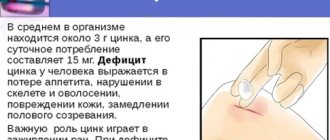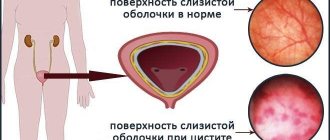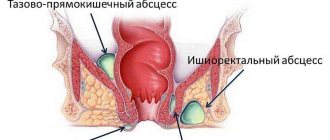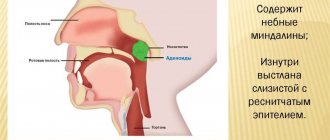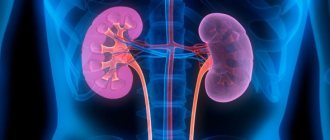Pancreatitis is an inflammation of the pancreas tissue (PG) with a violation of the outflow of its secretions. The disease is caused by poor patency of the excretory ducts against the background of increased activity of enzyme systems. In this case, the secreted juices do not have time to escape into the lumen of the duodenum, but accumulate and begin to digest the gland’s own tissues.
Over the past 10 years, the “popularity” of the disease has increased 3 times and has become a characteristic phenomenon not only for adults, but also for the younger generation. The most common reasons are poor diet and lack of proper culture of drinking alcoholic beverages.
Epidemiology
The content of the article
According to recent studies, every 34 people out of 100 thousand get pancreatitis every year, and due to the increasing prevalence of the main etiological risk factors - obesity, alcoholism, smoking, stone formation, the disease is diagnosed in younger people. Also, such statistics are associated with improved diagnosis and identification of less common causes of pancreatitis.
An independent risk factor for AP is smoking. This habit worsens alcohol-related damage to the pancreas.
Risk factor for pancreatitis is smoking
Most patients have mild pancreatitis; in 20-30% of cases, severe pancreatitis occurs. The mortality rate from severe pancreatitis is about 15%.
Complications
If you do not carry out competent and complete treatment of chronic pancreatitis in a timely manner, then the following complications will begin to actively progress against its background:
- pancreatic ascites;
- diabetes mellitus of pancreatogenic type;
- abscess;
- formation of phlegmon in the retroperitoneal space;
- inflammatory process in the excretory ducts;
- chronic duodenal obstruction;
- B12 deficiency anemia;
- portal hypertension;
- gastrointestinal bleeding may occur due to rupture of the pseudocyst;
- formation of malignant tumors.
Etiology
The etiological factors of pancreatitis are very diverse - metabolic, mechanical, infectious, vascular. Often the disease occurs as a result of the interaction of several factors. The etiology of AP is determined only in 75% of patients.
Chronic pancreatitis is classified according to etiology and risk factors according to the TIGAR-O classification (Table 1).
Table 1. Etiological classification of chronic pancreatitis (TIGAR-O)
| Toxic-metabolic |
| Alcohol; Tobacco, smoking; Hypercalcemia (hyperparathyroidism); Hyperlipidemia; Chronic renal failure; Drugs and toxins. |
| Idiopathic |
| Early start; Late start; Tropical calcific pancreatitis, fibrocalcular pancreatic diabetes. |
| Genetic |
Autosomal dominant
|
| Autoimmune |
| Autoimmune pancreatitis type 1 (IgG4 positive); Autoimmune pancreatitis type 2 (negative IgG4). |
| Recurrent (reversible) and acute |
| Ponecrotic (acute); Reversible sharp:
Ischemic (postoperative, hypotensive); Infectious (viral); Chronic alcoholism; Poradiative; Diabetes. |
| Obstructive |
Benign pancreatic duct stricture:
Malignant stricture; Periampullary carcinoma; Pancreatic adenocarcinoma. |
Table 2. Rare causes of pancreatitis
| Nosology | Characteristics | Diagnostics |
| Metabolic pancreatitis | Hypertriglyceridemia and hypercalcemia | OP or HP |
| Drug-induced pancreatitis | Azathioprine, 6-mercaptopurine, sulfonamides, estrogens, tetracycline, valproic acid, antiretroviral drugs | OP or HP |
| Autoimmune pancreatitis | Focal or diffuse enlargement of the pancreas, hypotensive pancreatic shunt, expansion of the papillary part due to lymphoplasmocytes p.
| HP |
| Hereditary pancreatitis | Usually occurs at a young age, gene mutations are detected | Acute recurrent pancreatitis |
| Pancreatitis after the procedure | Endoscopic retrograde cholangiopancreatography was recently performed | Most often OP |
| Pancreatitis with sedimentation of bile (sediment) | Bile deposits and small stones (microlithiasis) | Most often OP |
| Pancreatitis Paraduodeninio groove ( groove ) | Fibrous formations between the head of the pancreas and the thickened wall of the duodenum, leading to duodenal stenosis, cystic changes in the pancreaticoduodenal groove or duodenal wall, pancreatic and bile duct stenosis | Exclusively HP |
| Duodenal diverticulum | Periampullary diverticulum, wind deformation | OP>HP |
| Traumatic pancreatitis | Direct trauma to the pancreas, intrapancreatic hematoma, rupture of the pancreas with fluid around it | OP or HP |
| Infectious pancreatitis | Various infectious factors: viruses, bacteria, fungi. | Most often in OP |
| Ischemic pancreatitis | Pancreatitis due to circulatory disorders, arterial hypotension, cardiogenic shock | OP or HP |
Patient's complaints
Already from the first complaints of the patient, it is possible to accurately diagnose acute or chronic inflammation in the pancreas, thereby making a differential diagnosis at the interview stage. The following complaints indicate the disease:
- The pain is intense, occurring half an hour after eating fatty or fried foods, or after drinking alcoholic beverages. They are encircling in nature, spreading throughout the abdomen with irradiation into the lower back and shoulder blade. The pain syndrome persists for a long time and is not relieved by taking the usual analgesics.
Important! Not all patients experience pain. In 15% of cases, the pathology is painless or asymptomatic, which leads to errors in diagnosis.
- Complaints of belching, vomiting, flatulence, loose, frequent stools. Digestive disorders are caused by atony of the duodenum and the backflow of pancreatic juice into the ducts. For both acute and chronic pancreatitis, vomiting is specific and does not bring relief. On the contrary, the patient continues to feel nausea. In this case, there is a bitter taste in the mouth or a bitter taste in the vomit.
- Weight loss, muscle weakness, vitamin deficiency. These complaints are caused by pancreatic enzyme deficiency.
- Thirst, dry mouth, “hungry” fainting are symptoms characteristic of diabetes mellitus. They are due to the fact that the affected organ does not produce enough of the glucose-lowering hormone insulin.
Hypertriglyceridemic pancreatitis
Hypertriglyceridemic pancreatitis accounts for 1-14% of cases of AP and 56% of cases of pancreatitis in pregnant women. Hypertriglyceridemia is defined as elevated fasting triglycerides (TG) (>1.7 mmol/L). Serum TG levels above 11.3 mmol/l can lead to the development of AP in 5% of cases. In cases where the TG concentration exceeds 22.6 mmol/l, the incidence of AP is 10–20%. The risk of AP increases with a TG concentration of 5.6 mmol/l: the higher it is, the higher the risk of AP and the more severe the pancreatitis.
Pancreatitis caused by hypertriglyceridemia is associated with both primary (genetic - dyslipidemia types I, IV, V) and secondary (acquired) disorders of lipoprotein metabolism. The main causes of acquired hypertriglyceridemia are obesity, diabetes, hypothyroidism, pregnancy and medication use - treatment with estrogens or tamoxifen, beta-blockers, antiretroviral drugs, thiazide diuretics.
During pregnancy, TG levels usually rise to 3.3 mmol/L in the third trimester and do not cause pancreatitis. Inheritance is most common during pregnancy due to hereditary familial dyslipidemia.
Inflammation of the pancreas is not caused by TGs themselves, but by toxic free fatty acids formed as a result of hydrolysis of the pancreas by pancreatic lipases. The clinical picture of the disease is usually no different from ordinary pancreatitis. In some cases, severe hypertriglyceridemia, xanthoma, xantheliosis, hepatosteatosis, etc. may be observed.
It is important to promptly diagnose hypertriglyceridemic pancreatitis and correct triglyceride levels. Standard treatment of pancreatitis is also prescribed - infusion therapy, analgesics.
The main methods of reducing hypertriglyceridemia are apheresis, especially plasmapheresis, and insulin therapy. However, there is no data from randomized studies on the effectiveness of these methods. Treatment is selected based on the severity of pancreatitis and warning signs, including hypocalcemia, lactic acidosis, exacerbation of systemic inflammatory response, and progressive organ dysfunction.
Intravenous insulin should be used if the patient does not tolerate or cannot undergo apheresis. Insulin lowers TG levels, but the goal of this treatment in severe hypertriglyceridemic pancreatitis is to prevent stress-induced release of fatty acids from adipocytes. The usual insulin infusion dose is 0.1-0.3 U/kg/hour and requires hourly blood glucose measurements. To prevent hypoglycemia, a glucose solution is prescribed.
Hourly blood glucose measurements
For therapeutic apheresis, triglyceride levels should be monitored after each procedure. Plasmapheresis is continued until the TG concentration drops to 5.6 mmol/l. For insulin alone, TG levels are monitored every 12 hours. The insulin infusion is stopped when the TG concentration reaches 5.6 mmol/L (usually after a few days).
Further long-term correction of hypertriglyceridemia with TG <2.2 mmol/L is important to prevent recurrence of pancreatitis. There are medical and non-medical measures for this. The latter include diet, weight loss for obesity, increased physical activity, limiting added sugar, and good glycemic control for diabetes. You should also avoid medications that increase TG levels. Medicines include antilipid drugs, usually fibrates (fenofibrate).
Diagnostics
Enzymes that do not reach their “destination” (duodenum) enter the blood and are found in feces and urine. Therefore, for an accurate diagnosis, it is necessary to undergo a general and biochemical blood test, a urine test, and also undergo all the necessary tests:
- Ultrasound;
- endoscopy;
- X-ray examination of the chest and abdominal cavity;
- computed tomogram;
- FGDS (a probe is inserted through the mouth, the organs of the upper abdomen are examined);
- laparoscopy;
- coprogram (stool analysis), etc.
A thorough and detailed examination allows you to assess the condition of the pancreas and its ducts and choose the right direction of treatment.
Calcific (hypercalcemic) pancreatitis
Calcific pancreatitis is very rare. The most common causes of hypercalcemia (about 90%) are hyperparathyroidism and malignancy. According to studies, hyperparathyroidism causes about 0.4% of cases of AP.
It is believed that calcium accumulated in the pancreatic duct activates trypsinogen in the pancreatic parenchyma. The low incidence of pancreatitis among patients with chronic hypercalcemia suggests that other factors (sudden increases in serum calcium levels) also influence OP.
Patients with hyperparathyroidism and associated hypercalcemia develop pancreatitis 10 to 20 times more often than the general population. The most common causes of hyperparathyroidism are:
- parathyroid adenoma (80%);
- hyperplasia of all 4 parathyroid glands (15–20%);
- thyroid cancer (2%).
Parathyroid adenoma
The most important principles of treatment are the correction of hypercalcemia and elimination of the root cause. In patients with asymptomatic mild hypercalcemia (calcium concentration 3.5 mmol/L), initial treatment is 200 to 300 ml/hour of isotonic sodium chloride solution based on a urine output of 100 to 150 ml per hour.
For immediate short-term treatment, patients who develop symptoms (lethargy, stupor) are given calcitonin, and for long-term treatment, an intravenous bisphosphonate is added. If bisphosphonates are contraindicated, zoledronic acid or denosumab can be used.
How long does pain with an inflamed pancreas last?
This question is very difficult to answer. It is impossible to say exactly how long the pain with this disease will last. But there is a certain classification.
When painful sensations with high intensity suddenly stop their manifestation and the patient’s condition quickly normalizes, this may not be a reason for joy, but for additional diagnostic procedures.
In the first case, the symptom can last for 10 days, while a long-term remission is observed.
In the second case, the patient’s pain lasts for 30-60 days. The pain syndrome is long-lasting, so it most often speaks of alcoholic pancreatitis.
If it does not stop even after taking medications, then this is an indication for surgery.
Toxic (drug-induced) pancreatitis
Drug-induced pancreatitis occurs in less than 5% of cases. The prognosis for this pancreatitis is generally good and the mortality rate is low. The pathogenetic mechanism of drug-induced pancreatitis includes:
- immunological reactions (6-mercaptopurine, aminosalicylates, sulfonamides);
- direct toxic effects (diuretics, sulfonamides);
- accumulation of toxic metabolites (valproic acid, didanosine, pentamidine, tetracycline), ischemia (diuretics, estrogens);
- increased viscosity of pancreatic juice (diuretics and steroids).
Demonstrating interactions between pancreatitis and drugs is usually difficult. Pancreatitis may develop within a few weeks of starting treatment. Rash and eosinophilia may occur. Meanwhile, patients taking valproic acid, pentamidine or didanosine do not develop pancreatitis until many months later due to chronic accumulation of the drug's metabolite.
When restarting treatment, patients should be closely monitored. If symptoms recur, the drug should be discontinued.
History taking
An equally important stage for making a diagnosis. The patient is asked about the time of onset of pain and whether its occurrence is associated with food intake. In chronic pancreatitis, pain is constant or occurs after eating fatty and fried foods, as well as other errors in the diet. The first pain sensations appear after 30-40 minutes. after eating. It is also important how the patient stopped the pain attack and whether it helped him. In an acute process, the pain is more intense.
The doctor asks whether there was a decrease in appetite on the eve of the exacerbation, a feeling of dryness or bitterness in the mouth. In acute pancreatitis, the patient has all these symptoms. The time of onset of dyspeptic disorders and the nature of vomit are also significant for making a diagnosis. Another criterion for diagnosis is the nature of the stool. In both acute and chronic pancreatitis, the stool is liquid, yellow, with an admixture of fat in the stool (steatorrhea).
Autoimmune pancreatitis
Autoimmune pancreatitis (AIP) is a rare disease that causes fibrotic inflammation of the pancreas. The prevalence of the disease has not been established in detail. AIP is estimated to account for 5-6% of cases of chronic pancreatitis.
Autoimmune pancreatitis is an increasingly recognized disease. Typically, AIP begins with weight loss, jaundice, and diffuse enlargement of the pancreas in imaging studies simulating cancer.
According to international consensus criteria, autoimmune pancreatitis is divided into:
- AIP type 1, or lymphoplasmacytic sclerosing pancreatitis;
- AIP type 2, or idiopathic ductal-centric pancreatitis.
Autoimmune pancreatitis type 1 most often manifests as obstructive jaundice, in 50% of cases. Obstructive jaundice develops due to compression of the distal bile ducts (enlargement of the head of the pancreas) or stricture of the proximal bile ducts.
Obstructive jaundice
Despite intense inflammation, patients do not experience typical abdominal pain or it is mild. Autoimmune pancreatitis type 1 belongs to a spectrum of immunoglobulin (Ig) G4-related diseases that can affect almost all organs of the body (biliary strictures, interstitial nephritis, IgG4-associated glandular exocrinopathy, sialadenitis, retroperitol).
AIP should be suspected in patients with evidence of both pancreatic and hepatobiliary disorders. Elevated serum IgG4 levels are detected in most patients with type 1 AIP.
Typical radiological signs after computed tomography (CT) are:
- diffuse pancreatic parenchyma (sausage-shaped pancreas);
- frame-type rim or focal lesions;
- diffuse pancreatic atrophy.
Endoscopic retrograde cholangiopancreatography (ERCP) reveals diffuse or multifocal narrowing of the pancreatic duct without dilatation. To confirm the diagnosis, it is important to evaluate all tests, but histological examination is considered the standard of diagnosis.
Table 3. Comparison table for autoimmune pancreatitis types 1 and 2
| Type 1 AIP | Type 2 AIP | |
| Age at which the disease develops | About 60 years old | About 40 years old |
| Male | 75% | 50% |
| Damage to other organs/association with IgG4-related disease | 50% | No |
| Inflammation | Small | High (10-20%) |
| Increased serum IgG4 | Contained in approximately 66% | Set at about 25% |
| Histological data: | ||
| lymphoplasmacytic infiltration | Characterized by | Characterized by |
| storiform fibrosis | Characterized by | Characterized by |
| obliterative phlebitis | Characterized by | Rarely noticeable |
| damage to granulocytic epithelium | There is no | Characterized by |
| periductal inflammation | Characterized by | Characterized by |
| IgG4 cells | ≥10 cells/DPL (in area of significant increase) | |
| Response to steroid treatment | 100% | 100% |
| Risk of relapse | Up to 60% | |
Autoimmune pancreatitis is treated with corticosteroids at a dose of 40 mg/day. 4-6 weeks followed by a reduction of 5 mg per week. Inadequate response or relapse is more common in patients with concomitant IgG4-related sclerosing cholangitis. In this case, 2 mg/kg azathioprine is recommended.
Classification
Chronic pancreatitis is classified
- by origin: primary (alcoholic, toxic, etc.) and secondary (biliary, etc.);
- according to clinical manifestations: pain (recurrent and constant), pseudotumorous (cholestatic, with portal hypertension, with partial duodenal obstruction), latent (clinical unexpressed) and combined (several clinical symptoms are expressed);
- according to the morphological picture (calcifying, obstructive, inflammatory (infiltrative-fibrous), indurative (fibro-sclerotic);
- according to the functional picture (hyperenzyme, hypoenzyme), according to the nature of functional disorders they can distinguish hypersecretory, hyposecretory, obstructive, ductular (secretory insufficiency is also divided according to the degree of severity into mild, moderate and severe), hyperinsulinism, hypoinsulinism (pancreatic diabetes mellitus);
Chronic pancreatitis is distinguished by the severity of the course and structural disorders (severe, moderate and mild). During the course of the disease, there are stages of exacerbation, remission and unstable remission.
Hereditary pancreatitis
Genetic pancreatitis may present as acute, recurrent, familial, or childhood-induced pancreatitis of unknown origin that later becomes chronic. The incidence of genetically induced pancreatitis is unknown. Some cases remain unidentified. Idiopathic pancreatitis is most common, especially in young people.
Autosomal dominant hereditary pancreatitis is caused by mutations in the PRSS1 gene. Mutations in the CFTR gene are associated with recessive hereditary pancreatitis. SPINK1 entry mutations may act as a disease-modifying factor along with other genetic and environmental factors.
Patients with PRSS1 or SPINK1 gene mutations (hereditary pancreatitis) increase the risk of exocrine pancreatic dysfunction, diabetes, and pancreatic cancer. According to studies, the risk of pancreatic cancer ranges from 7 to 20%. Smoking doubles the risk of pancreatic cancer.
The American College of Gastroenterology agrees that patients with hereditary pancreatitis should be screened annually for pancreatic cancer by magnetic resonance imaging (MRI) or endosonoscopy starting at age 50.
The principles of treatment of hereditary pancreatitis are the same as for pancreatitis of other etiologies. Quitting bad habits (alcohol, smoking) is crucial, since they significantly increase the risk of exacerbations, complications and progression to the terminal stage of pancreatitis. Younger patients with recurrent severe AP or CP can undergo pancreatectomy with autotransplantation of pancreatic islets.
ONLINE REGISTRATION at the DIANA clinic
You can sign up by calling the toll-free phone number 8-800-707-15-60 or filling out the contact form. In this case, we will contact you ourselves.
If you find an error, please select a piece of text and press Ctrl+Enter
Treatment options
Inflamed pancreas symptoms and treatment, which has been studied by many specialists, is a very complex disease. Self-medicating with herbs or drugs purchased in pharmacies without a doctor’s prescription is fraught with unpredictable outcomes.
To restore the inflamed pancreas, treatment is prescribed only by a doctor. It takes place only in a hospital setting, under the supervision of specialists. It may be exclusively medicinal, or it may include a complex of surgical intervention, medicinal and therapeutic treatment.
After the acute symptoms are relieved and the functioning of the organ is normalized, it is imperative to adhere to a certain diet in order to reduce the risk of re-inflammation.
Pancreas infections
In addition to conditionally pathogenic bacterial flora, which often affects the pancreas, this organ can also be affected by various specific infections that are bacterial in nature.
Most of them, by their characteristics, resemble foodborne toxic infections. For example, such as shigella, campylobacter. Some of them are characterized by systemic damage. It is provoked by Leptospira, Brucella and many other bacteria.
According to statistics, the leading infections of this organ are brucellosis and salmonellosis. Brucellosis is a typical animal disease that is transmitted to humans. The disease is manifested by a sharp decrease in body weight, constipation, and minor pain in the abdominal area.
Not less often, the pancreas is exposed to salmonellosis. Often, it is this infection, as a complication, that is the root cause of acute pancreatitis. Under the influence of these bacteria, acute intoxication occurs, which causes edematous-interstitial changes in the gland. Signs of damage are as follows: vomiting, nausea, acute pain in the abdomen, abnormal bowel movements. Not less often, an increased body temperature is observed. As a rule, it is quite difficult to establish the presence of salmonellosis without additional research. Since its symptoms are similar to ordinary food poisoning.
source

